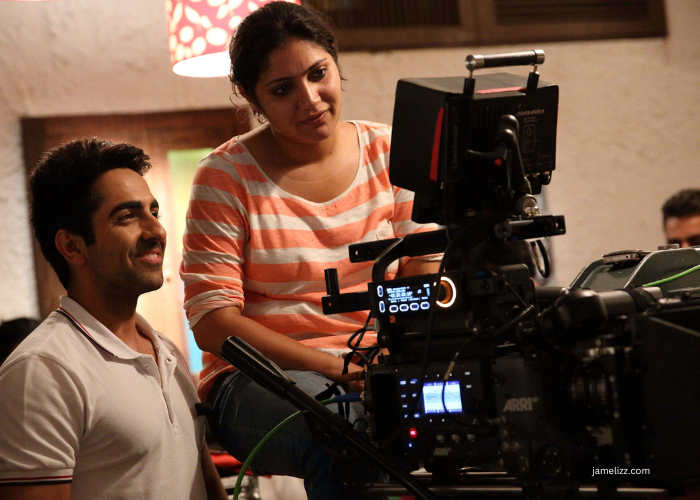In the realm of filmmaking, the camera is often seen as the primary tool for capturing the essence of a story. However, the art of cinematic storytelling transcends mere image capture. It is a complex, multifaceted discipline that weaves together narrative, emotion, and visual artistry to create a compelling and immersive experience. “Beyond the Camera: The Art of Cinematic Storytelling” delves into this intricate craft, exploring how filmmakers use a combination of techniques and artistic sensibilities to transform stories into unforgettable cinematic experiences.
The Narrative Blueprint: Crafting the Story
At the heart of every film is its story, and crafting this narrative is a meticulous process that extends far beyond the initial script. Screenwriters often spend years developing a story, shaping characters, and refining dialogues to create a cohesive and engaging plot. Yet, the screenplay is only the beginning.
In cinematic storytelling, the narrative blueprint involves a collaboration of various elements including direction, production design, and editing. The director’s vision plays a crucial role in translating the written word into visual language. Through careful staging, shot selection, and pacing, directors breathe life into the script, guiding actors and crew to realize the story’s potential.
Production design further enriches the narrative by creating environments that support and enhance the story. From the selection of locations to the design of sets and props, every visual element is meticulously crafted to reflect the story’s themes and setting. This attention to detail helps ground the narrative in a believable and immersive world, allowing audiences to fully engage with the story.
Visual Storytelling: The Power of Imagery
The adage “a picture is worth a thousand words” holds true in cinematic storytelling. Visual elements are not merely decorative but are integral to conveying narrative and emotion. Cinematography, lighting, and color grading are key components that work in tandem to enhance the story’s impact.
Cinematographers, or directors of photography, use camera angles, movement, and composition to tell a story visually. A low-angle shot might evoke a sense of power or dominance, while a high-angle shot could create feelings of vulnerability or insignificance. The choice of lens, focus, and depth of field further contributes to the visual narrative, guiding the audience’s attention and shaping their perception of the story.
Lighting is another critical aspect that influences the mood and atmosphere of a film. It can highlight characters, create shadows, and set the tone for different scenes. For instance, harsh, high-contrast lighting might be used to depict tension or conflict, while soft, diffused lighting could convey warmth and intimacy. Color grading, which adjusts the color balance of the footage, can also impact the emotional tone, enhancing the storytelling experience.
Sound and Music: The Emotional Undercurrent
While visuals are crucial, sound and music play a vital role in shaping the audience’s emotional journey. The soundtrack of a film, including dialogue, sound effects, and music, is meticulously designed to complement the visual narrative and enhance the emotional resonance.
Dialogue not only serves to advance the plot but also reveals character motivations and relationships. The way characters speak, their tone, and the rhythm of their conversations contribute to the storytelling. Subtle nuances in dialogue can convey underlying emotions and themes that might not be immediately apparent.
Sound effects, such as the creaking of a door or the rustling of leaves, add realism and depth to the film’s world. These auditory cues immerse the audience in the story, creating a richer and more believable experience.
Music, often referred to as the emotional language of cinema, has the power to evoke feelings and set the mood. A well-composed score can heighten tension, underscore romantic moments, or elicit tears. Composers work closely with directors to create music that complements and enhances the visual storytelling, adding an additional layer of emotional depth to the film.
Editing: Weaving the Narrative Tapestry
Editing is where the disparate elements of a film come together to form a cohesive whole. The editor’s role is to assemble shots, scenes, and sequences into a fluid and engaging narrative. This process involves selecting the best takes, arranging them in a logical order, and ensuring that the pacing and rhythm of the film maintain audience interest.
Montage, a technique of combining short shots into a sequence to convey a narrative or thematic idea, is a powerful tool in editing. It can compress time, show character development, or create emotional resonance. For example, a montage of a character’s daily routines can quickly establish their lifestyle and personal struggles without lengthy exposition.
Transitions, such as cuts, fades, and dissolves, also play a significant role in storytelling. They help establish the flow between scenes and create a sense of continuity or contrast. The choice of transition can influence the film’s pacing and the audience’s emotional response.
Directorial Vision: The Artistic Touch
Ultimately, the art of cinematic storytelling is shaped by the director’s vision. A director is the guiding force behind the film, overseeing all aspects of production to ensure that the story is told in a way that is true to their artistic intent. This involves making decisions about casting, visual style, and the overall tone of the film.
A director’s unique perspective and creativity bring coherence to the various elements of filmmaking. Their ability to inspire and lead the cast and crew ensures that every aspect of the film aligns with the intended narrative and emotional impact. From the initial concept to the final cut, the director’s artistic touch is crucial in shaping the film into a compelling and memorable experience.
Conclusion: The Art Beyond the Camera
“Beyond the Camera: The Art of Cinematic Storytelling” highlights that filmmaking is far more than just capturing images. It is a complex art form that involves the seamless integration of narrative, visual artistry, sound, and editing. Each component of filmmaking contributes to creating a rich and immersive experience that resonates with audiences on an emotional and intellectual level.
As filmmakers continue to push the boundaries of storytelling, they explore new ways to engage and captivate viewers. The art of cinematic storytelling remains a testament to the power of collaboration and creativity, transforming stories into extraordinary experiences that leave a lasting impact on the audience.



